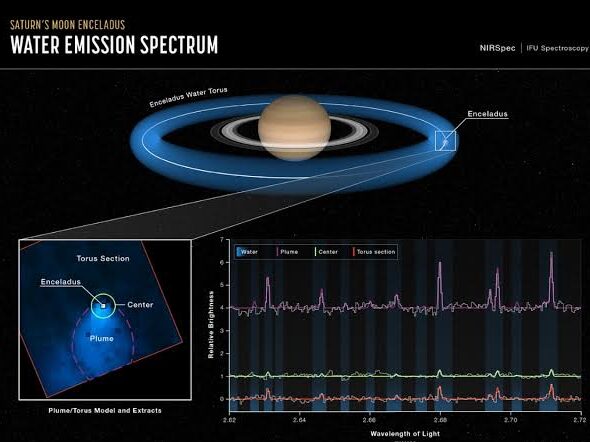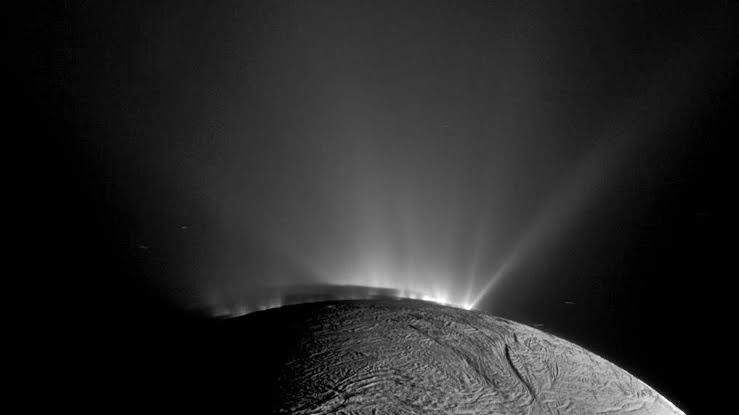The James Webb Space Telescope (JWST) has spotted a 9,000 km long water plume erupting from the surface of Saturn’s moon Enceladus. The plume was first detected by the Cassini spacecraft in 2005, but JWST’s observations are the first to provide such a detailed view of the source of the plume.

The plume is thought to be caused by the heating of water ice by hydrothermal vents on the surface of Enceladus. The water vapor in the plume is thought to be a sign of the presence of an ocean beneath the surface of Enceladus. This ocean is thought to be salty and warm, and it may even be habitable.
The discovery of the water plume on Enceladus is a major breakthrough in our understanding of the moon. It suggests that Enceladus may be a potential home for life, and it also raises the possibility that there may be other moons in the solar system with similar oceans.
JWST is a powerful new telescope that is capable of making groundbreaking discoveries. The detection of the water plume on Enceladus is just the beginning of what JWST is capable of. In the years to come, JWST is expected to make many more discoveries that will change our understanding of the universe.

